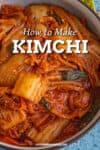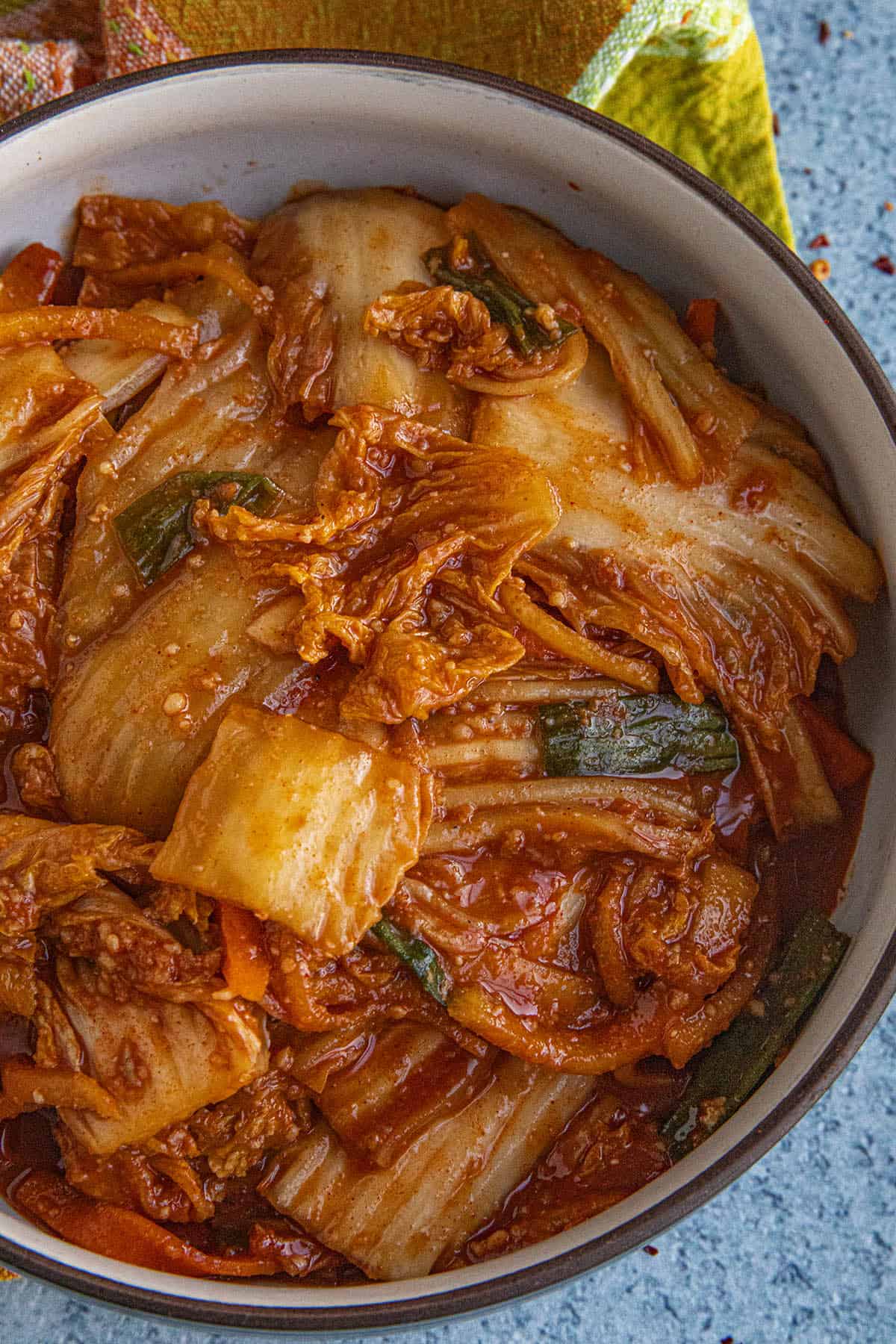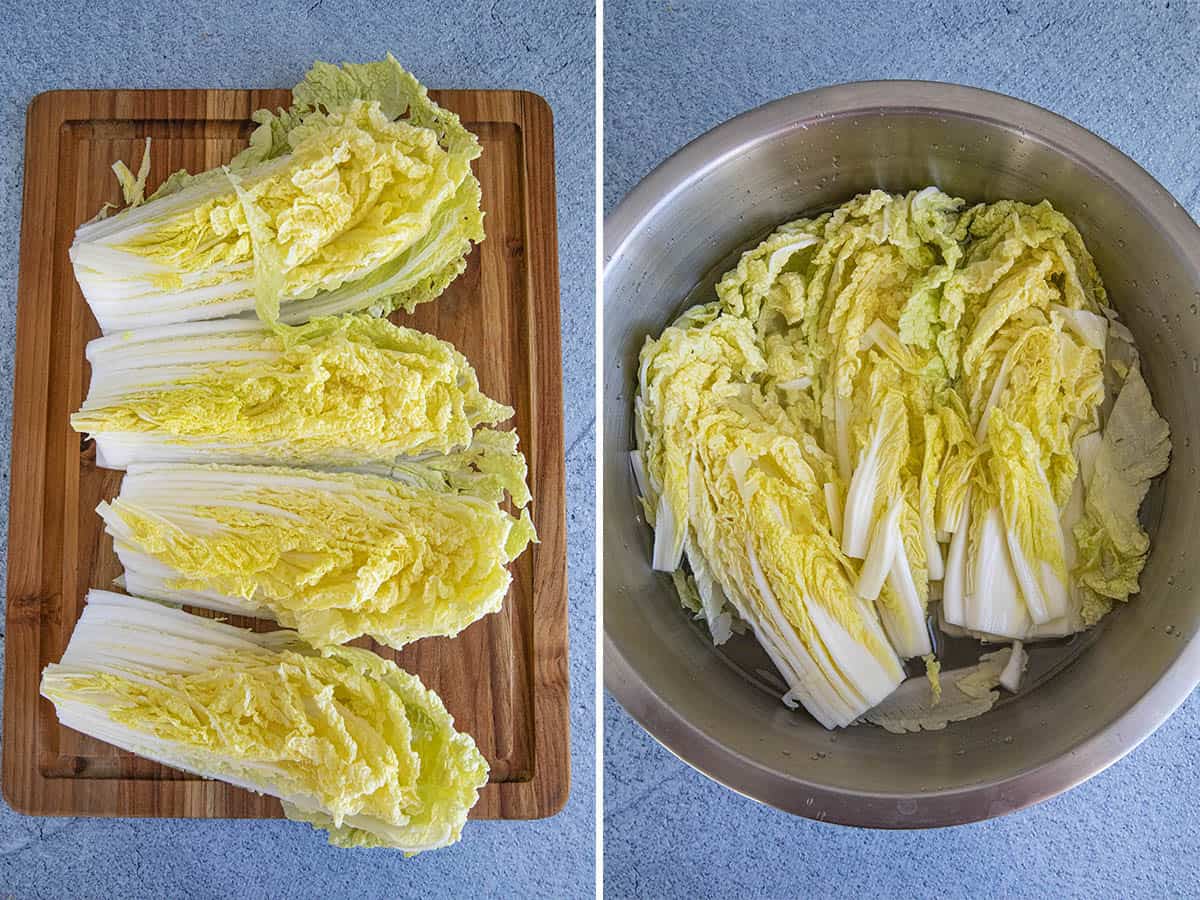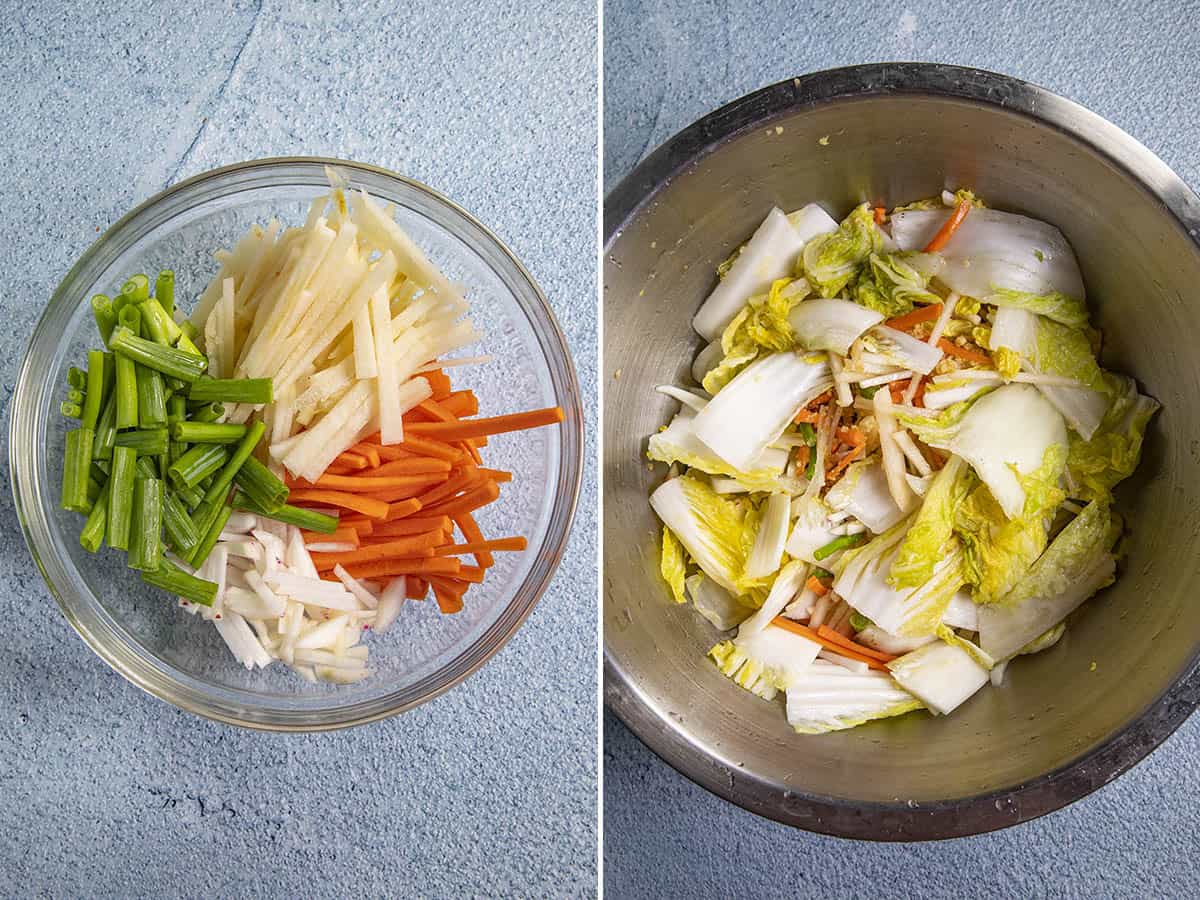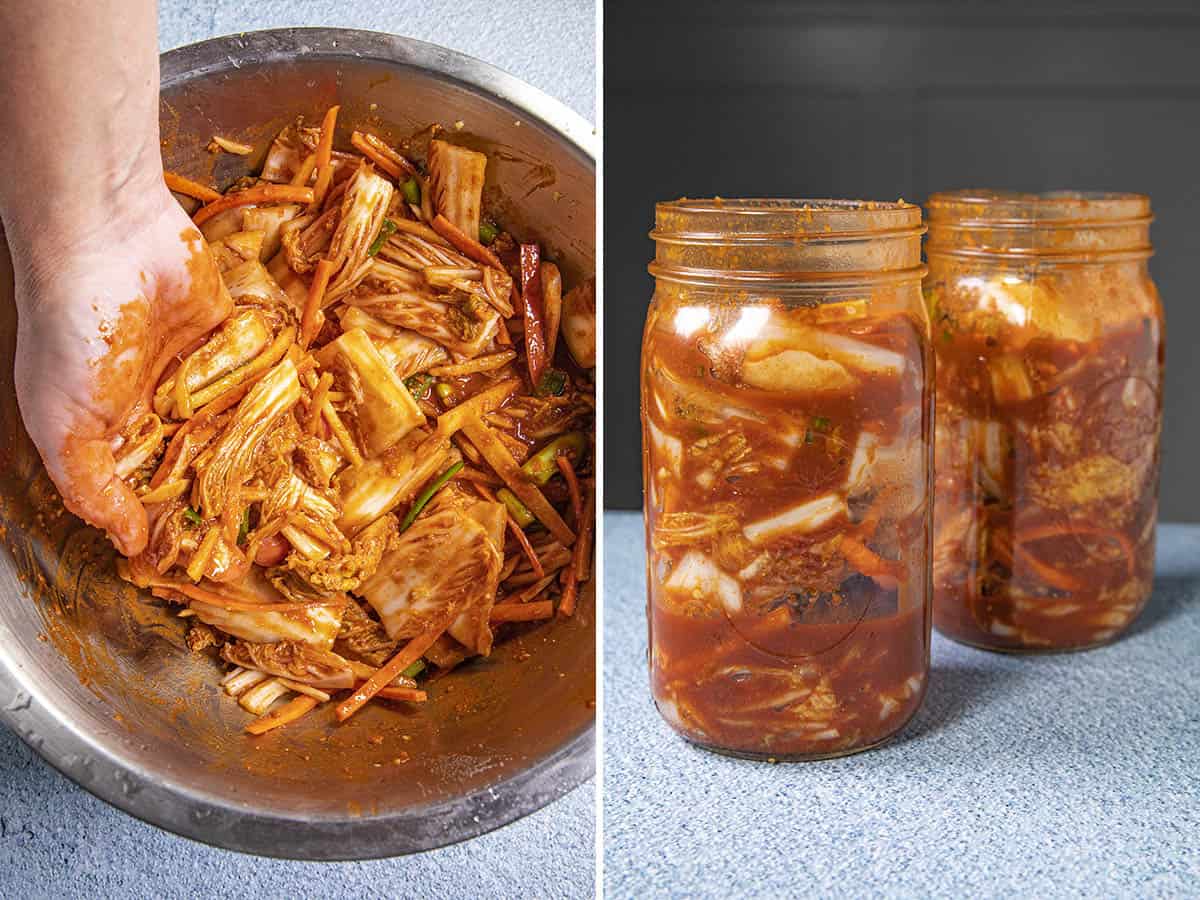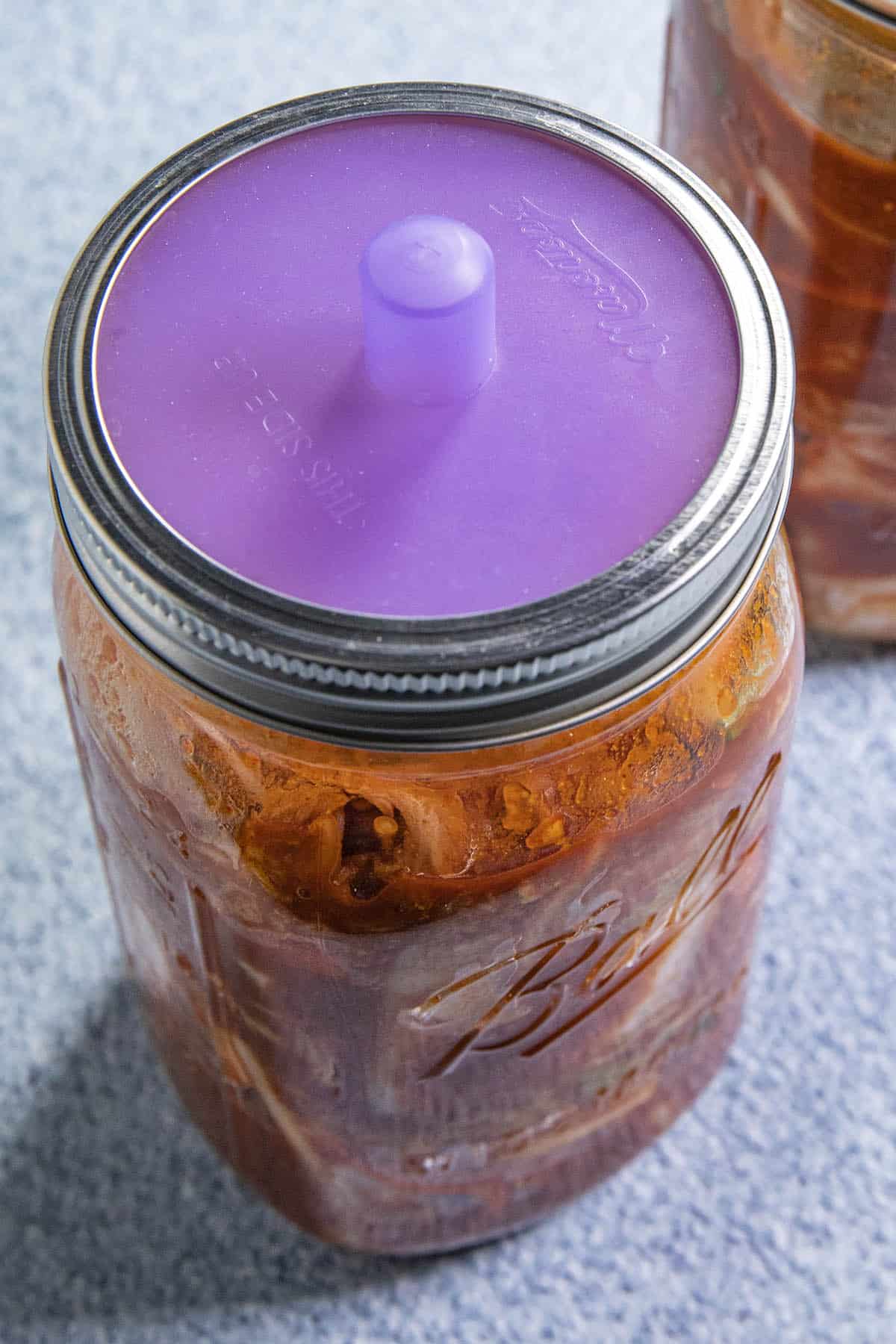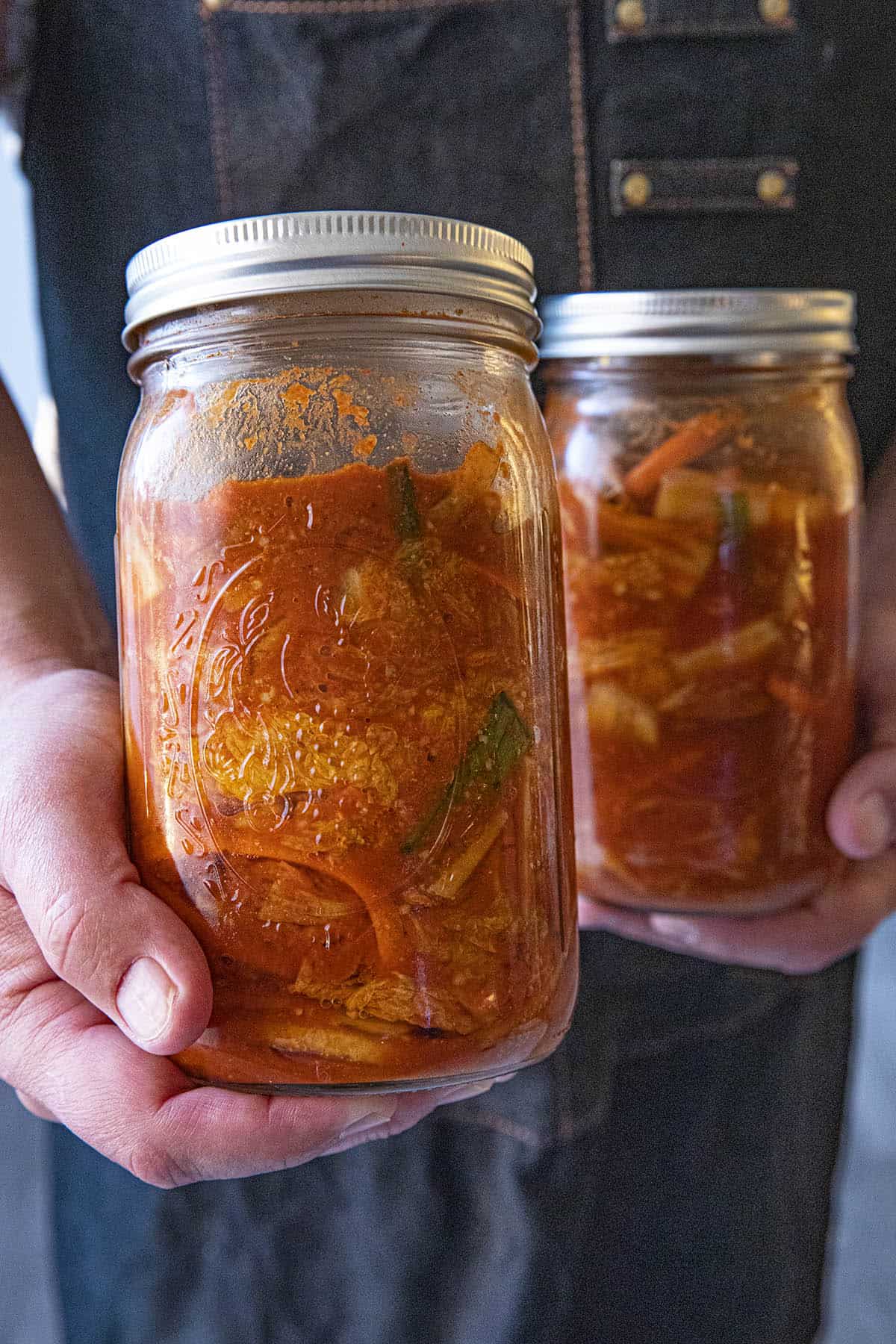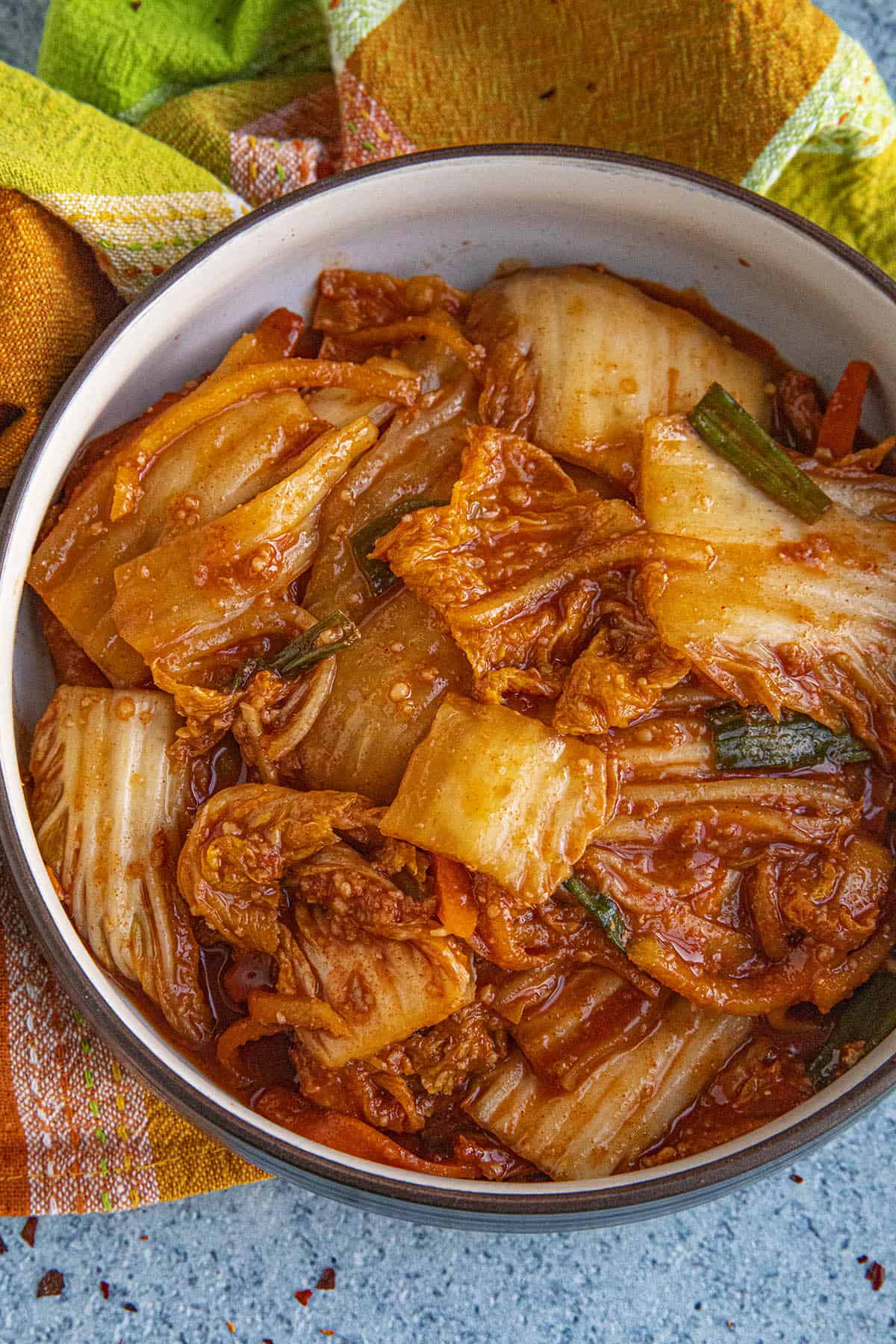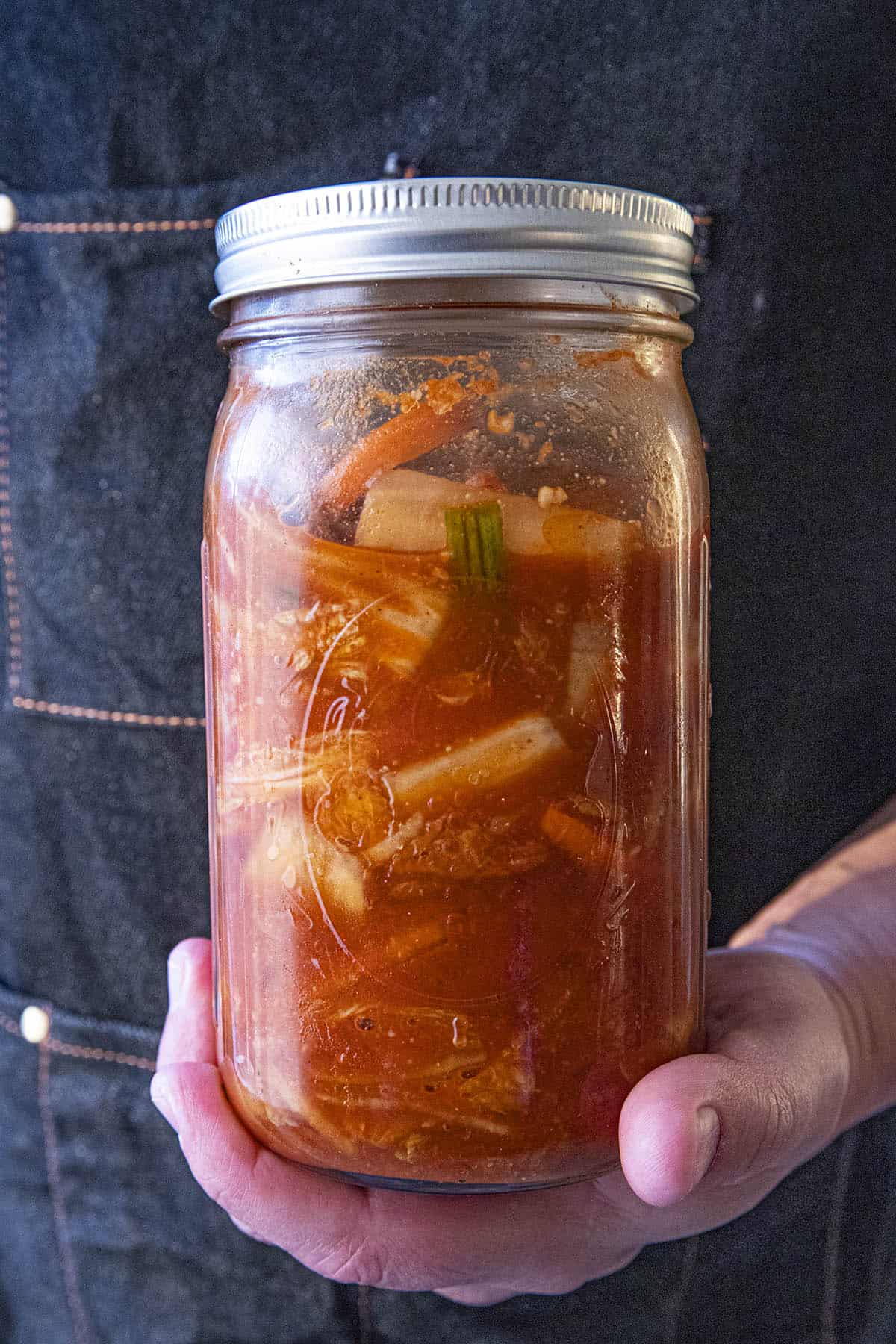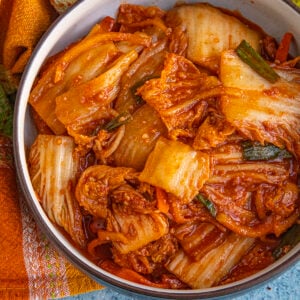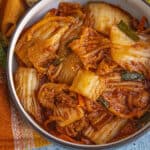Add the Umami. Stir in the fish sauce, salted shrimp, and miso paste (or your other umami alternatives). Kimchi is a Korean dish of spicy fermented vegetables, and extremely significant to Korean cuisine. It is consumed in many ways throughout Korea, tossed into fried rice dishes, ramen type dishes, served up as the star of the meal or nibbled on as a simple, healthy snack. Napa cabbage is more commonly used, though it can be made with many other vegetables. The process involves fermentation, which is the break down of foods by lactic acid bacteria in a salt brine. This particular version is the more popular Baechu Kimchi, or Napa Cabbage Kimchi, and we love it. It’s definitely a spicy kimchi, as I include some extra spice, as well as extra umami because we just love it that way. I also use a wet brine method, as opposed to a dry brine method, because it is easier to do and more fool-proof. Some people prefer the dry brine method, which is totally fine, but I always get great results this way. Let’s talk about how to make kimchi, shall we? Make the Brine. Whisk together the unchlorinated cold water and sprinkle salt in a large bowl. Slice the Cabbage. Slice off the root end of the cabbage. Slice the cabbage into quarters and submerge them in the brine. Use a plate or other small weights to keep the cabbage completely submerged. Rinse and Chop the Cabbage. Set the cabbage into a colander and drain the brine. Rinse the cabbage and squeeze out excess water using your hands. Chop the cabbage into 1 inch pieces (if desired, or leave the pieces whole). Slice and Combine the Vegetables. Slice the the carrot, scallions, radish or turnip, and Asian pear into thin slices or matchsticks. Chop the garlic and ginger. Add them all to a large bowl along with the chopped cabbage. Toss to combine. Glutinous Rice Flower. Add the rice flour and 1 cup water to a sauce pan. Heat to a simmer, then whisk for 3-4 minutes until smooth and the mixture forms a smooth, loose paste. Korean Chili Flakes (Gochugaru). Remove from heat and stir in the gochugaru. The chili flakes will bloom as the mixture cools. That’s it, my friends. I hope you enjoy my kimchi recipe. Let me know if you make it. I’d love to hear how it turned out for you. Keep it spicy! Extra spicy for me, please! I love kimchi. Mix with the Cabbage and Vegetables. Pour the mixture into the cabbage leaves and vegetables. With your hands, rub the gochugaru mixture into the vegetables, covering them as completely as possible. Be thorough. Really get in there with your hands! Taste and Adjust. Taste and adjust for salt or any other desired seasonings. Need more chili flakes? More fish sauce? Go for it! This is to allow any gases to escape while fermenting. Moisture should release from the jar, so press the kimchi down if needed to keep it below the liquid. Gases should escape via the fermentation membrane, or just loosen the lid to let any gas build up out. The fermenting kimchi will continue to ferment slowly in the fridge. Boom! Done! Your kimchi is ready to go. Super curious how you plan to use your fermented cabbage once it’s ready. And how spicy you made it! You can use other ingredients, such as extra fish sauce, shrimp paste, dried shrimp, seaweed, anchovies, dried fish, soy sauce, or miso paste. I enjoy a combo of shrimp paste, fish sauce and miso, all of which I always have on hand for other recipes. Kimchi Sauce Swaps. Gochugaru is pretty essential, but you can use gochujang instead, which is a Korean fermented chili paste. Try it with both. Fermentation Times. Fermentation times can vary, depending on temperatures and ingredients. You can ferment longer if you’d like, but it is best to judge by smell and flavor. The kimchi will grow more sour as it ferments, which some people prefer. Smell and taste after a day or two, then transfer to the refrigerator where it will continue the fermentation process more slowly. Go Beyond Cabbage Kimchi. Napa cabbage is more commonly used to make kimchi, and is what most people associate with it. However, you can make kimchi with any vegetable, such as cucumber kimchi, which is another popular version, radish kimchi or mustard greens and others. Try it with some of your favorite vegetables, or a combination of them. You can also make many dishes with spicy kimchi. Kimchi Fried Rice is hugely popular, and quite delicious, as is Kimchi Stew (kimchi jjigae), and I love to eat Kimchi Ramen. It typically will last 1 week or so outside of the refrigerator, so it is best to keep it refrigerated. Got any questions? Ask away! I’m happy to help. If you enjoy this recipe, I hope you’ll leave a comment with some STARS. Also, please share it on social media. Don’t forget to tag us at #ChiliPepperMadness. I’ll be sure to share! Thanks! — Mike H.
